
Joseph Mallord William Turner Painting Reproductions 8 of 14
1775-1851
English Romanticism Painter
Joseph Mallord William Turner (April 23, 1775 (exact date disputed) - December 19, 1851) was an English Romantic landscape painter, watercolourist and printmaker, whose style can be said to have laid the foundation for Impressionism.
Life and career
Turner was born in Covent Garden, London. His father, William, was a barber and wig maker. His mother, Mary Marshall, became increasingly mentally unstable, perhaps, in part, due to the early death of Turner's younger sister in 1783. She died in 1804, after having been committed in 1799 to a mental asylum.
Possibly due to the load placed on the family by these problems, the young Turner was sent in 1785 to stay with his uncle on his mother's side in Brentford, which was then a small town west of London on the banks of the River Thames. It was here that he first expressed an interest in painting. A year later he went to school in Margate in Kent to the east of London in the area of the Thames estuary. By this time he had created many drawings, which his father exhibited in his shop window.
He entered the Royal Academy of Art schools when he was only 16 years old, citation needed] and was accepted into the academy a year later. Sir Joshua Reynolds, president of the Royal Academy at the time, chaired the panel that admitted him. At first Turner showed a keen interest in architecture but was advised to keep to painting by the architect Thomas Hardwick (junior). A watercolour of Turner's was accepted for the Summer Exhibition of 1790 after only one year's study. He exhibited his first oil painting in 1796, and thereafter exhibited at the academy nearly every year for the rest of his life.
Although renowned for his oils, Turner is also one of the greatest masters of British watercolour landscape painting. He is commonly known as "the painter of light".
One of his most famous oil paintings is The fighting Temeraire tugged to her last berth to be broken up, painted in 1838, which hangs in the National Gallery, London. See also The Golden Bough.
Turner travelled widely in Europe, starting with France and Switzerland in 1802 and studying in the Louvre in Paris in the same year. He also made many visits to Venice during his lifetime. On a visit to Lyme Regis, in Dorset, England, he painted a stormy scene (now in the Cincinnati Art Museum). Turner was also a frequent guest of Lord Egremont at Petworth House in West Sussex and painted scenes from the grounds of the house and of the Sussex countryside, including a view of the Chichester Canal that Egremont funded. Petworth House still displays a number of paintings.
As he grew older, Turner became more eccentric. He had few close friends except for his father, who lived with him for thirty years, eventually working as his studio assistant. His father's death in 1829 had a profound effect on him, and thereafter he was subject to bouts of depression. He never married, although he had two daughters by Sarah Danby, one born in 1801, the other in 1811.
He died in the house of his mistress Mrs Sophia Caroline Booth in Cheyne Walk, Chelsea on 19 December 1851. At his request he was buried in St Paul's Cathedral, where he lies next to Sir Joshua Reynolds. His last exhibition at the Royal Academy was in 1850.
Style
Turner's talent was recognized early in his life. He became a full art academician at the age of 29. Financial independence allowed Turner to innovate freely; his mature work is characterized by a chromatic palette and broadly applied atmospheric washes of paint. According to David Piper's The Illustrated History of Art, his later pictures were called "fantastic puzzles." However, Turner was still recognized as an artistic genius: influential English art critic John Ruskin described Turner as the artist who could most "stirringly and truthfully measure the moods of Nature."
Suitable vehicles for Turner's imagination were to be found in the subjects of shipwrecks, fires (see Burning of Parliament, an event which Turner rushed to witness first-hand, and transcribed in a series of watercolor sketches), natural catastrophes, and natural phenomena such as sunlight, storm, rain, and fog. Against such spectacular backdrops the human presence became all but insignificant. He was fascinated by the violent power of the sea, as seen in Dawn after the Wreck (1840) and The Slave Ship (1840).
His first works, such as Tintern Abbey (1795) and Venice: S. Giorgio Maggiore (1819), stayed true to the traditions of English landscape. However, in Hannibal Crossing the Alps (1812), an emphasis on the destructive power of nature had already come into play. His distinctive style of painting, in which he used watercolor technique with oil paints, created lightness, fluency, and ephemeral atmospheric effects.
One popular story about Turner, though it likely has little basis in reality, states that he even had himself "tied to the mast of a ship in order to experience the drama" of the elements during a storm at sea.
In his later years he used oils ever more transparently, and turned to an evocation of almost pure light by use of shimmering colour. A prime example of his mature style can be seen in Rain, Steam and Speed - The Great Western Railway, where the objects are barely recognizable. The intensity of hue and interest in evanescent light not only placed Turner's work in the vanguard of English painting, but later exerted an influence upon art in France, as well; the Impressionists, particularly Claude Monet, carefully studied his techniques. In the modern art era, advocates of abstract art were also inspired by Turner.
It has been suggested that the high levels of ash in the atmosphere during the 1816 Year Without a Summer, which led to unusually spectacular sunsets during this period, were an inspiration for some of Turner's work.
John Ruskin says in his "Notes" on Turner in March 1878, that an early patron, Dr Thomas Monro, the Principal Physician of Bedlam, was a significant influence on Turner's style:
"His true master was Dr Monro; to the practical teaching of that first patron and the wise simplicity of method of watercolour study, in which he was disciplined by him and companioned by Giston, the healthy and constant development of the greater power is primarily to be attributed; the greatness of the power itself, it is impossible to over-estimate."
Legacy
Turner left a small fortune which he hoped would be used to support what he called "decayed artists". Part of the money went to the Royal Academy of Arts, which now does not use it for this purpose though occasionally it awards students the Turner Medal. His collection of finished paintings was bequeathed to the British nation, and he intended that a special gallery would be built to house them. This did not come to pass owing to a failure to agree on a site, and then to the parsimony of British governments. Twenty-two years after his death, the British Parliament passed an Act allowing his paintings to be lent to museums outside London, and so began the process of scattering the pictures which Turner had wanted to be kept together. In 1910 the main part of the Turner Bequest, which includes unfinished paintings and drawings, was rehoused in the Duveen Turner Wing at the Tate Gallery. In 1987 a new wing of the Tate, the Clore Gallery, was opened specifically to house the Turner bequest, though some of the most important paintings in it remain in the National Gallery in contravention of Turner's condition that the finished pictures be kept and shown together.
In 1974, the Turner Museum was founded in the USA by Douglass Montrose-Graem to house his collection of Turner prints.
A prestigious annual art award, the Turner Prize, created in 1984, was named in Turner's honour, but has become increasingly controversial, having promoted art which has no apparent connection with Turner's. Twenty years later the more modest Winsor & Newton Turner Watercolour Award was founded.
A major exhibition, "Turner's Britain", with material, (including The Fighting Temeraire) on loan from around the globe, was held at Birmingham Museum & Art Gallery from 7 November 2003 to 8 February 2004.
In 2005, Turner's The Fighting Temeraire was voted Britain's "greatest painting" in a public poll organized by the BBC.
In October 2005 Professor Harold Livermore, its owner for 60 years, gave Sandycombe Lodge, the villa at Twickenham which Turner designed and built for himself, to the Sandycombe Lodge Trust to be preserved as a monument to the artist. In 2006 he additionally gave some land to the Trust which had been part of Turner's domaine. The Friends of Turner's House were formed in 2004 to support it.
In April 2006, Christie's New York auctioned Giudecca, La Donna Della Salute and San Giorgio, a view of Venice exhibited at the Royal Academy in 1841, for US$35.8 million, setting a new record for a Turner. The New York Times stated that according to two sources who had requested anonymity the buyer was casino magnate Stephen Wynn.
In 2006, Turner's Glaucus and Scylla (1840) was returned by Kimbell Art Museum to the heirs of John and Anna Jaffe after a Holocaust Claim was made. The painting is scheduled to be sold by Christie's in April of 2007.
Life and career
Turner was born in Covent Garden, London. His father, William, was a barber and wig maker. His mother, Mary Marshall, became increasingly mentally unstable, perhaps, in part, due to the early death of Turner's younger sister in 1783. She died in 1804, after having been committed in 1799 to a mental asylum.
Possibly due to the load placed on the family by these problems, the young Turner was sent in 1785 to stay with his uncle on his mother's side in Brentford, which was then a small town west of London on the banks of the River Thames. It was here that he first expressed an interest in painting. A year later he went to school in Margate in Kent to the east of London in the area of the Thames estuary. By this time he had created many drawings, which his father exhibited in his shop window.
He entered the Royal Academy of Art schools when he was only 16 years old, citation needed] and was accepted into the academy a year later. Sir Joshua Reynolds, president of the Royal Academy at the time, chaired the panel that admitted him. At first Turner showed a keen interest in architecture but was advised to keep to painting by the architect Thomas Hardwick (junior). A watercolour of Turner's was accepted for the Summer Exhibition of 1790 after only one year's study. He exhibited his first oil painting in 1796, and thereafter exhibited at the academy nearly every year for the rest of his life.
Although renowned for his oils, Turner is also one of the greatest masters of British watercolour landscape painting. He is commonly known as "the painter of light".
One of his most famous oil paintings is The fighting Temeraire tugged to her last berth to be broken up, painted in 1838, which hangs in the National Gallery, London. See also The Golden Bough.
Turner travelled widely in Europe, starting with France and Switzerland in 1802 and studying in the Louvre in Paris in the same year. He also made many visits to Venice during his lifetime. On a visit to Lyme Regis, in Dorset, England, he painted a stormy scene (now in the Cincinnati Art Museum). Turner was also a frequent guest of Lord Egremont at Petworth House in West Sussex and painted scenes from the grounds of the house and of the Sussex countryside, including a view of the Chichester Canal that Egremont funded. Petworth House still displays a number of paintings.
As he grew older, Turner became more eccentric. He had few close friends except for his father, who lived with him for thirty years, eventually working as his studio assistant. His father's death in 1829 had a profound effect on him, and thereafter he was subject to bouts of depression. He never married, although he had two daughters by Sarah Danby, one born in 1801, the other in 1811.
He died in the house of his mistress Mrs Sophia Caroline Booth in Cheyne Walk, Chelsea on 19 December 1851. At his request he was buried in St Paul's Cathedral, where he lies next to Sir Joshua Reynolds. His last exhibition at the Royal Academy was in 1850.
Style
Turner's talent was recognized early in his life. He became a full art academician at the age of 29. Financial independence allowed Turner to innovate freely; his mature work is characterized by a chromatic palette and broadly applied atmospheric washes of paint. According to David Piper's The Illustrated History of Art, his later pictures were called "fantastic puzzles." However, Turner was still recognized as an artistic genius: influential English art critic John Ruskin described Turner as the artist who could most "stirringly and truthfully measure the moods of Nature."
Suitable vehicles for Turner's imagination were to be found in the subjects of shipwrecks, fires (see Burning of Parliament, an event which Turner rushed to witness first-hand, and transcribed in a series of watercolor sketches), natural catastrophes, and natural phenomena such as sunlight, storm, rain, and fog. Against such spectacular backdrops the human presence became all but insignificant. He was fascinated by the violent power of the sea, as seen in Dawn after the Wreck (1840) and The Slave Ship (1840).
His first works, such as Tintern Abbey (1795) and Venice: S. Giorgio Maggiore (1819), stayed true to the traditions of English landscape. However, in Hannibal Crossing the Alps (1812), an emphasis on the destructive power of nature had already come into play. His distinctive style of painting, in which he used watercolor technique with oil paints, created lightness, fluency, and ephemeral atmospheric effects.
One popular story about Turner, though it likely has little basis in reality, states that he even had himself "tied to the mast of a ship in order to experience the drama" of the elements during a storm at sea.
In his later years he used oils ever more transparently, and turned to an evocation of almost pure light by use of shimmering colour. A prime example of his mature style can be seen in Rain, Steam and Speed - The Great Western Railway, where the objects are barely recognizable. The intensity of hue and interest in evanescent light not only placed Turner's work in the vanguard of English painting, but later exerted an influence upon art in France, as well; the Impressionists, particularly Claude Monet, carefully studied his techniques. In the modern art era, advocates of abstract art were also inspired by Turner.
It has been suggested that the high levels of ash in the atmosphere during the 1816 Year Without a Summer, which led to unusually spectacular sunsets during this period, were an inspiration for some of Turner's work.
John Ruskin says in his "Notes" on Turner in March 1878, that an early patron, Dr Thomas Monro, the Principal Physician of Bedlam, was a significant influence on Turner's style:
"His true master was Dr Monro; to the practical teaching of that first patron and the wise simplicity of method of watercolour study, in which he was disciplined by him and companioned by Giston, the healthy and constant development of the greater power is primarily to be attributed; the greatness of the power itself, it is impossible to over-estimate."
Legacy
Turner left a small fortune which he hoped would be used to support what he called "decayed artists". Part of the money went to the Royal Academy of Arts, which now does not use it for this purpose though occasionally it awards students the Turner Medal. His collection of finished paintings was bequeathed to the British nation, and he intended that a special gallery would be built to house them. This did not come to pass owing to a failure to agree on a site, and then to the parsimony of British governments. Twenty-two years after his death, the British Parliament passed an Act allowing his paintings to be lent to museums outside London, and so began the process of scattering the pictures which Turner had wanted to be kept together. In 1910 the main part of the Turner Bequest, which includes unfinished paintings and drawings, was rehoused in the Duveen Turner Wing at the Tate Gallery. In 1987 a new wing of the Tate, the Clore Gallery, was opened specifically to house the Turner bequest, though some of the most important paintings in it remain in the National Gallery in contravention of Turner's condition that the finished pictures be kept and shown together.
In 1974, the Turner Museum was founded in the USA by Douglass Montrose-Graem to house his collection of Turner prints.
A prestigious annual art award, the Turner Prize, created in 1984, was named in Turner's honour, but has become increasingly controversial, having promoted art which has no apparent connection with Turner's. Twenty years later the more modest Winsor & Newton Turner Watercolour Award was founded.
A major exhibition, "Turner's Britain", with material, (including The Fighting Temeraire) on loan from around the globe, was held at Birmingham Museum & Art Gallery from 7 November 2003 to 8 February 2004.
In 2005, Turner's The Fighting Temeraire was voted Britain's "greatest painting" in a public poll organized by the BBC.
In October 2005 Professor Harold Livermore, its owner for 60 years, gave Sandycombe Lodge, the villa at Twickenham which Turner designed and built for himself, to the Sandycombe Lodge Trust to be preserved as a monument to the artist. In 2006 he additionally gave some land to the Trust which had been part of Turner's domaine. The Friends of Turner's House were formed in 2004 to support it.
In April 2006, Christie's New York auctioned Giudecca, La Donna Della Salute and San Giorgio, a view of Venice exhibited at the Royal Academy in 1841, for US$35.8 million, setting a new record for a Turner. The New York Times stated that according to two sources who had requested anonymity the buyer was casino magnate Stephen Wynn.
In 2006, Turner's Glaucus and Scylla (1840) was returned by Kimbell Art Museum to the heirs of John and Anna Jaffe after a Holocaust Claim was made. The painting is scheduled to be sold by Christie's in April of 2007.
323 J. M. W. Turner Paintings

Caen Cathedral n.d.
Paper Art Print
$52.13
$52.13
SKU: TJW-14598
Joseph Mallord William Turner
Original Size: 39.5 x 30.5 cm
Public Collection
Joseph Mallord William Turner
Original Size: 39.5 x 30.5 cm
Public Collection
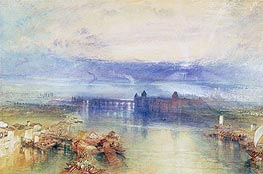
Lake Constance n.d.
Paper Art Print
$52.13
$52.13
SKU: TJW-14599
Joseph Mallord William Turner
Original Size: unknown
York Art Gallery, North Yorkshire, UK
Joseph Mallord William Turner
Original Size: unknown
York Art Gallery, North Yorkshire, UK
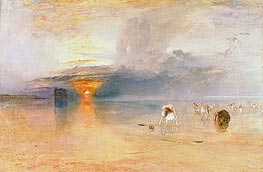
Calais Sands at Low Water, Poissards Gathering Bait 1830
Oil Painting
$1154
$1154
Canvas Print
$54.62
$54.62
SKU: TJW-14600
Joseph Mallord William Turner
Original Size: 68.6 x 105.5 cm
Bury Art Gallery and Museum, Lancashire, UK
Joseph Mallord William Turner
Original Size: 68.6 x 105.5 cm
Bury Art Gallery and Museum, Lancashire, UK
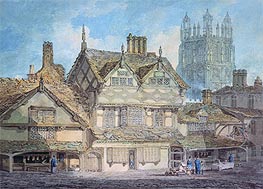
Wrexham, Denbighshire c.1792/93
Paper Art Print
$52.13
$52.13
SKU: TJW-14601
Joseph Mallord William Turner
Original Size: 23.6 x 32.4 cm
Victoria and Albert Museum, London, UK
Joseph Mallord William Turner
Original Size: 23.6 x 32.4 cm
Victoria and Albert Museum, London, UK
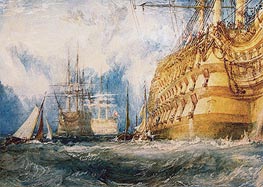
A First Rate Taking In Stores 1818
Paper Art Print
$52.13
$52.13
SKU: TJW-14602
Joseph Mallord William Turner
Original Size: 28.6 x 39.7 cm
Public Collection
Joseph Mallord William Turner
Original Size: 28.6 x 39.7 cm
Public Collection
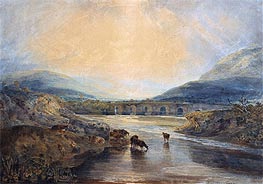
Abergavenny Bridge, Monmouthshire: Clearing Up ... n.d.
Paper Art Print
$52.13
$52.13
SKU: TJW-14603
Joseph Mallord William Turner
Original Size: unknown
Private Collection
Joseph Mallord William Turner
Original Size: unknown
Private Collection
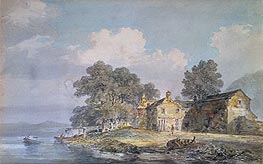
A Farmhouse by a Lake in the Lake District c.1797
Paper Art Print
$52.13
$52.13
SKU: TJW-14604
Joseph Mallord William Turner
Original Size: unknown
Private Collection
Joseph Mallord William Turner
Original Size: unknown
Private Collection
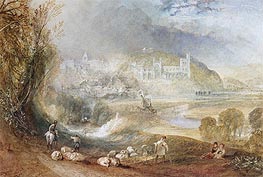
Arundel Castle and Town c.1824
Paper Art Print
$52.13
$52.13
SKU: TJW-14605
Joseph Mallord William Turner
Original Size: unknown
Private Collection
Joseph Mallord William Turner
Original Size: unknown
Private Collection
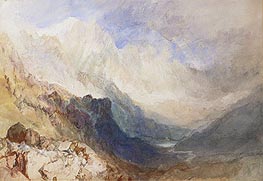
A Scene in the Val d'Aosta n.d.
Paper Art Print
$52.13
$52.13
SKU: TJW-14606
Joseph Mallord William Turner
Original Size: unknown
Private Collection
Joseph Mallord William Turner
Original Size: unknown
Private Collection

The Coast Under Vietri, near Salerno n.d.
Paper Art Print
$52.13
$52.13
SKU: TJW-14607
Joseph Mallord William Turner
Original Size: unknown
Private Collection
Joseph Mallord William Turner
Original Size: unknown
Private Collection
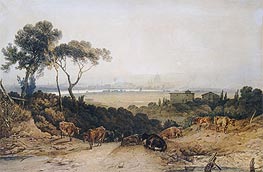
London: Autumnal Morning, View from Clapham ... n.d.
Paper Art Print
$52.13
$52.13
SKU: TJW-14618
Joseph Mallord William Turner
Original Size: unknown
Private Collection
Joseph Mallord William Turner
Original Size: unknown
Private Collection

Lake of Thun c.1845/51
Paper Art Print
$52.13
$52.13
SKU: TJW-14619
Joseph Mallord William Turner
Original Size: 36.9 x 54.1 cm
The Taft Museum, Cincinnati, USA
Joseph Mallord William Turner
Original Size: 36.9 x 54.1 cm
The Taft Museum, Cincinnati, USA
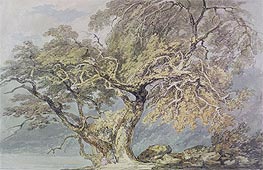
A Great Tree c.1796
Paper Art Print
$52.13
$52.13
SKU: TJW-14620
Joseph Mallord William Turner
Original Size: 25.2 x 38.6 cm
Yale Center for British Art, Connecticut, USA
Joseph Mallord William Turner
Original Size: 25.2 x 38.6 cm
Yale Center for British Art, Connecticut, USA
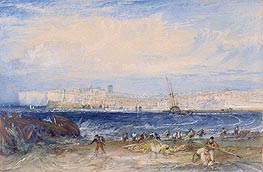
Margate c.1822
Paper Art Print
$52.13
$52.13
SKU: TJW-14621
Joseph Mallord William Turner
Original Size: 15.7 x 23.7 cm
Yale Center for British Art, Connecticut, USA
Joseph Mallord William Turner
Original Size: 15.7 x 23.7 cm
Yale Center for British Art, Connecticut, USA
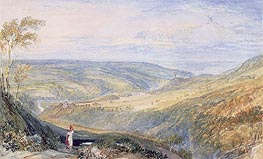
Gibside, County Durham from the South n.d.
Paper Art Print
$52.13
$52.13
SKU: TJW-14622
Joseph Mallord William Turner
Original Size: unknown
Bowes Museum, County Durham, UK
Joseph Mallord William Turner
Original Size: unknown
Bowes Museum, County Durham, UK

Valley of the Washburn 1818
Paper Art Print
$52.13
$52.13
SKU: TJW-14623
Joseph Mallord William Turner
Original Size: 33 x 41 cm
City Art Gallery, Leeds, UK
Joseph Mallord William Turner
Original Size: 33 x 41 cm
City Art Gallery, Leeds, UK
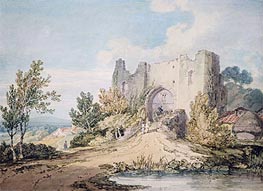
Llanblethian Castle Gateway 1797
Paper Art Print
$54.88
$54.88
SKU: TJW-14624
Joseph Mallord William Turner
Original Size: 39.5 x 53.2 cm
City Art Gallery, Leeds, UK
Joseph Mallord William Turner
Original Size: 39.5 x 53.2 cm
City Art Gallery, Leeds, UK
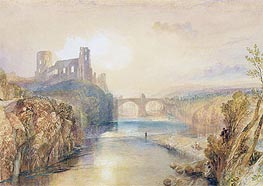
Barnard Castle n.d.
Paper Art Print
$52.13
$52.13
SKU: TJW-14625
Joseph Mallord William Turner
Original Size: 29.5 x 41.3 cm
Yale Center for British Art, Connecticut, USA
Joseph Mallord William Turner
Original Size: 29.5 x 41.3 cm
Yale Center for British Art, Connecticut, USA
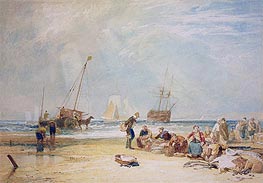
Fishmarket on the Sands, Hastings n.d.
Paper Art Print
$52.13
$52.13
SKU: TJW-14626
Joseph Mallord William Turner
Original Size: 27.2 x 39.8 cm
Private Collection
Joseph Mallord William Turner
Original Size: 27.2 x 39.8 cm
Private Collection
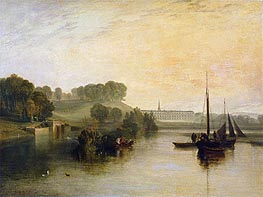
Petworth, Sussex, the Seat of the Earl of ... 1810
Oil Painting
$1141
$1141
Canvas Print
$62.01
$62.01
SKU: TJW-14627
Joseph Mallord William Turner
Original Size: 91.4 x 120.7 cm
Public Collection
Joseph Mallord William Turner
Original Size: 91.4 x 120.7 cm
Public Collection
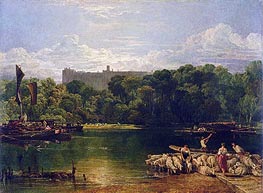
Windsor Castle from the Thames c.1805
Oil Painting
$1356
$1356
Canvas Print
$61.56
$61.56
SKU: TJW-14628
Joseph Mallord William Turner
Original Size: 85.7 x 122 cm
Public Collection
Joseph Mallord William Turner
Original Size: 85.7 x 122 cm
Public Collection

Tabley, the Seat of Sir J.F. Leicester (Calm Morning) c.1809
Oil Painting
$1011
$1011
Canvas Print
$61.56
$61.56
SKU: TJW-14629
Joseph Mallord William Turner
Original Size: 91.4 x 122 cm
Public Collection
Joseph Mallord William Turner
Original Size: 91.4 x 122 cm
Public Collection
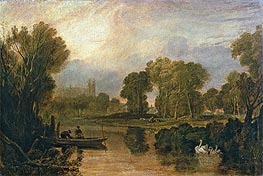
Eton College from the River (The Thames at Eton) c.1808
Oil Painting
$1049
$1049
Canvas Print
$55.24
$55.24
SKU: TJW-14630
Joseph Mallord William Turner
Original Size: 59.7 x 90.2 cm
Public Collection
Joseph Mallord William Turner
Original Size: 59.7 x 90.2 cm
Public Collection
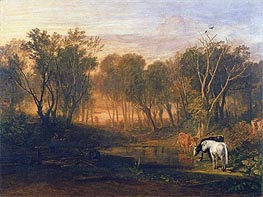
The Forest of Bere c.1808
Oil Painting
$1084
$1084
Canvas Print
$61.71
$61.71
SKU: TJW-14631
Joseph Mallord William Turner
Original Size: 89 x 119.4 cm
Public Collection
Joseph Mallord William Turner
Original Size: 89 x 119.4 cm
Public Collection